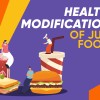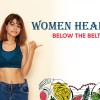
BREAKING THE FADS!
Babies have been breastfed by mothers for as long as mothers have had babies. So it is a common belief that we know all that is there to know about. But despite large volumes of research into breastfeeding and vast amounts written on the subject, still there are plenty of myths surrounding how to feed the babies. Here a few common ones which you may have heard...
Myth 1- breastfeeding will make your breasts sag
Fact- your breast tissues sag during pregnancy. Regardless of whether you feed your baby or not, they are likelier to sag when they return to their normal size.
It is a concern for most women that breastfeeding will adversely affect the shape of their breasts. But several researches have been conducted to prove that breastfeeding does not cause sagging breasts. On the contrary the factors responsible for this breast ptosis (‘sagging’ breasts) are age, number of pregnancies & smoking. The real culprit is not breastfeeding, rather pregnancy. Post pregnancy, enlarged mammary glands shrink, leaving behind saggy breasts and stretch marks.
Myth 2- you need to space out feeding for breasts to fill up.
Fact- the more your baby will drink, the more your breasts will produce. So, listen to your baby’s hunger cues.
Spacing out breastfeeds in the hope of giving time to the breasts to ‘fill up’ with milk actually lowers down the level of hormones that produce milk , causing reduced milk supply. Frequent feeding and sucking is necessary to increase milk supply. So, if the baby wants to feed often, let him - it encourages the body to produce more milk in order to match the baby’s needs. Also sometimes, breastfed babies may want to suck for reasons other than hunger such as when they are frightened or in pain, commonly known as ‘non-nutritive feeding’. It is important to provide comfort to the baby and soothe him and parents should not ignore this concept.
Myth 3- drink more milk to make good quality milk.
Fact- give your body nutritious food and keep yourself hydrated, rest assured your body will produce healthy milk for your baby.
There is no scientific evidence to suggest that increasing milk consumption would increase the milk supply in feeding mothers. A balanced diet rich in protein, minerals and vitamins helps to keep the breast milk supply up. Water, being an essential component of breastmilk, should not be ignored. So, always stay hydrated. The best is to have at least one glass of water every time the baby is being fed as well as in between when the mother feels thirsty. Aim to have between 8-12 glasses water daily.
Myth 4- you need to nurse every 2 hours around the clock-no more, no less-to make sure that your baby gets enough to eat.
Fact- watch your baby and not the clock. Count the number of dirty diapers the baby has-it should be at least 6 wet diapers plus two to three “seedy” stools daily.
Babies eating patterns are as individual as their parents. Many newborns do actually fall in every-two-hour routine but its always emphasised to “watch the baby and not the clock”. It is important to break this myth of ‘feeding interval obsession’. After first two weeks, most babies are quite happy with 7-8 feeds during a day, at 2-3 hours interval but some babies amy feed 12-18 times in a 24-hour period. So, there is no rigid time table as to how often a baby is to be nursed.
Myth 5- stop breastfeeding if the mother has any disease/illness.
Fact- breast feeding can be continued during most of the maternal illnesses including hepatitis B, TB, breast abscess and mastitis. It can be given in infections such as rhinitis, viral fever, respiratory infections and asthma.
Breast feeding is done during illness because it is the best pacifier to the sick baby, most easily digestible to the sick baby, satisfies the nutritional & fluid demands and offers immunological & anti-infective factors. Along with this, breastfeeding is possible with appropriate medication, treatment and support in diseases like insulin dependent diabetes, multiple sclerosis, systemic lupus erythematosus, hypothyroidism, crohn’s disease & ulcerative colitis. breast feeding can be continued during most of the maternal illnesses including hepatitis B, TB, breast abscess and mastitis. It can be given in infections such as rhinitis, viral fever, respiratory infections and asthma. Human milk has been successfully used for infants with cleft palate, inborn errors of metabolism, especially phenylketonuria, cystic fibrosis and down’s syndrome. It should be discontinued only if there are gastrointestinal contraindications to oral feedings.
Myth 6- breastfeeding will make the baby clingy and dependent.
Fact- studies have shown that babies who benefit from the attachment of breastfeeding tend to be more independent later in life.
All newborn babies are totally dependent on their mothers for survival. Breastfeeding is a nature’s way of developing a very strong bond between mother and the child that is essential for the emotional development of the baby. This connection leads to the baby becoming more independent & resilient later in life. In fact, it is a must to exclusively breastfeed the baby for 6 months, followed by introduction of weaning foods after 6 months.






